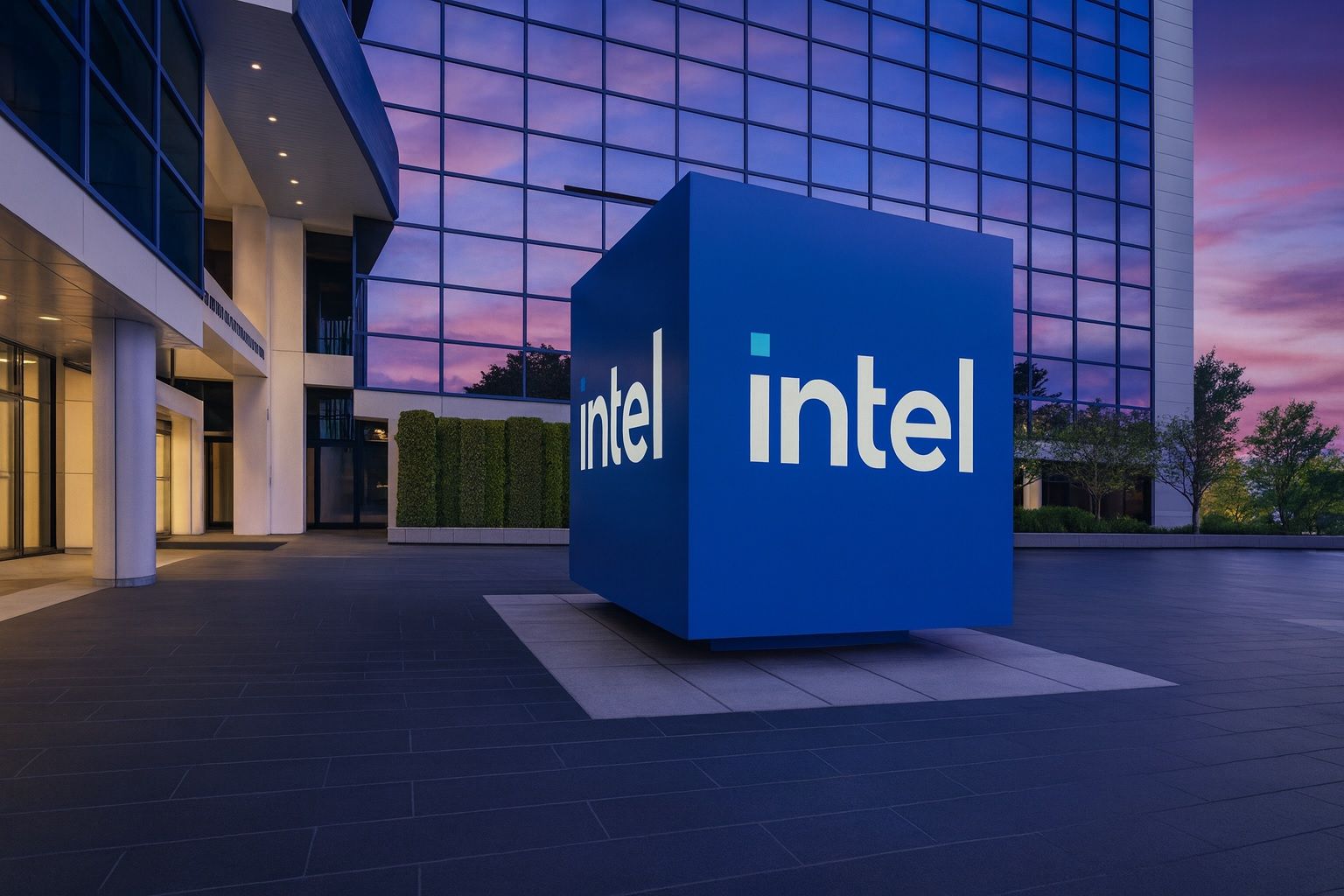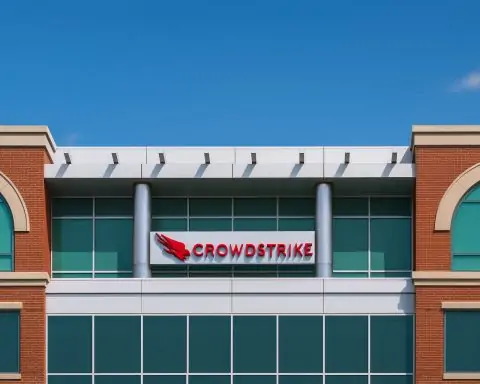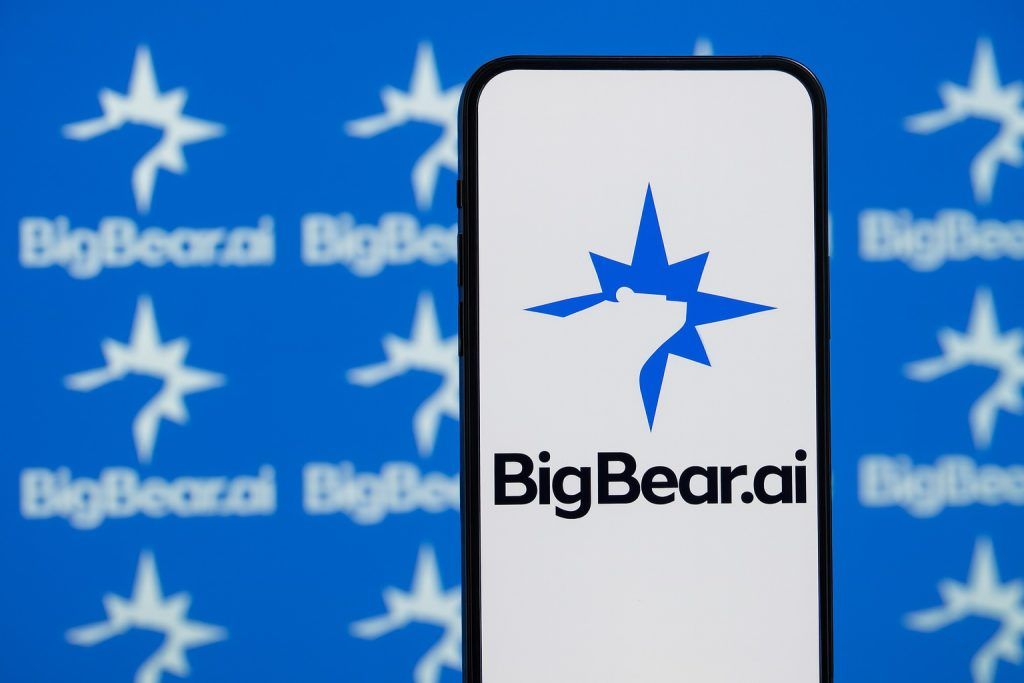- Stock near multi-year high: INTC shares trade around $38–$39 (Oct. 27 close), roughly double January levels [1]. 2025 YTD gain is ~85–90%, far outpacing the S&P 500 (~6%) [2] [3].
- Q3 earnings beat: Oct. 23 results showed revenue $13.7 B (+3% YoY) and adjusted EPS $0.23 (vs. ~$0.01 expected) [4] [5]. Intel swung to a GAAP profit of ~$4.1 B (vs. a large loss a year ago) [6] [7]. Net income jumped 124% YoY to $4.1 B [8]. CEO Lip-Bu Tan touted “steady progress” in the turnaround [9].
- $15B strategic funding: A wave of partnerships gave Intel a $15B+ lifeline [10] [11]. In August, the U.S. government took a ~10% stake (~$8.9B) under the CHIPS Act [12]. Nvidia agreed to invest $5B (~4% stake) in Intel common stock (for AI chip collaboration) [13] [14], and SoftBank’s Vision Fund bought ~$2B of shares [15] [16]. CFO David Zinsner used much of these funds to pay down $4.3B in debt [17].
- New products & foundry: Intel unveiled “Panther Lake” Core Ultra 3 laptops (built on its new 18A node) and previewed an 18A-based Xeon server chip [18] [19]. The first 18A fab (Fab 52 in Arizona) is ramping up production [20]. CEO Tan said Panther Lake is slated for HVM late 2025 and called it “the most advanced processors ever designed and manufactured in the United States” [21]. He is also exploring shifting foundry focus to the even newer “14A” node to attract big customers (e.g. Apple, Nvidia) [22].
- Analyst sentiment mixed: The stock’s surge has far outpaced forecasts. Average 12-month analyst targets are only $26–$30 (≈25–30% below the current price) [23] [24]. Several firms have cut Intel to Hold/Reduce (e.g. HSBC, BofA) citing rich valuation and execution risk [25] [26]. Intel’s forward P/E is ~70×, “far above peers” (Nvidia ~30×, AMD ~40×) [27]. Bulls counter that the $15B cash infusion plus aggressive cost cuts set Intel up for 2026; a few bullish forecasts even top $40 if the turnaround sticks [28].
Intel’s stock is trading near 2-year highs (~$38 per share) after recent earnings and strategic investments lifted investor confidence [29] [30]. Intel’s shares have climbed about 85–90% so far in 2025, dwarfing the S&P 500’s ~6% gain [31] [32]. Much of the recent rally came after the Oct. 23 earnings report: analysts were surprised to see Intel return to profitability and beat on margins and EPS. The stock jumped roughly 7–9% in after-hours trading on earnings day [33]. (According to Reuters, “Intel’s stock has risen nearly 90% in 2025, outperforming Nvidia,” one report notes [34].) As of Oct. 27, INTC was trading around $38.25 [35] – near its highest level since 2022.
The Q3 report showed signs of a nascent turnaround. Revenue of $13.7 B was up ~3% year-over-year [36], driven by stronger PC and client-chip sales. Intel generated $8.5 B from its Client Computing Group (up 5% YoY) and launched its new Panther Lake AI PC chips [37]. Datacenter & AI sales were flat at $4.1 B, but CFO Zinsner said demand is picking up: he quipped that Intel now has a “high-class problem” of demand outstripping supply [38]. Intel swung to a $4.1 B GAAP profit (vs. a large loss in Q3 2024) [39]. Gross margins (~40%) also topped estimates. Tan credited the company’s rightsizing efforts and partner funding for the jump: as one analyst put it, Intel “turned a corner and is steadying the ship,” with cost cuts and fresh funding forming “a strong setup for 2026” [40].
Management also used the partners’ investments to shore up the balance sheet. Intel received roughly $20 B in new cash (government, SoftBank, sales of Altera/Mobileye stakes) and paid down $4.3 B of debt in Q3 [41] [42]. CEO Lip-Bu Tan emphasized U.S. manufacturing, saying Intel is “proud to build on [its legacy] as we expand our domestic operations” [43]. He noted that Intel’s new 18A process will be the “foundation for products over the next decade,” with Fab 52 in Arizona cranking out the first chips [44] [45]. Intel also previewed its next server CPU (Xeon 6+ on 18A) and said it is engaging customers on the future 14A node [46] [47]. In sum, leadership says the company is “transforming” and will play “a much more significant role” in the AI era [48].
Intel’s strategic partnerships grabbed headlines. In mid-October, Nvidia announced a plan to invest $5 B in Intel common stock and collaborate on AI chips [49] [50]. Intel will design NVIDIA-custom x86 CPUs and laptops with integrated RTX GPUs, while Nvidia’s $5 B stake (at $23.28/share) underpins the alliance [51] [52]. Nvidia CEO Jensen Huang called the deal “historic,” fusing NVIDIA’s AI stack with Intel’s CPUs [53]. Tan added that Intel’s platforms “complement NVIDIA’s AI leadership” and thanked Nvidia for its confidence [54]. In addition, in August the U.S. government converted $8.9 B of CHIPS Act funding into a ~10% equity stake [55]. SoftBank’s Vision Fund quietly bought about $2 B of Intel shares earlier this year [56] [57]. All told, about $15 B of outside funding has “rejuvenated investor confidence and shored up Intel’s balance sheet” [58].
New products on tap: Intel’s first 18A-based laptop chips (code-named “Panther Lake”) and server chips are rolling off U.S. production lines [59] [60]. These innovations are key to Intel’s comeback story. The October earnings call revealed Intel has begun initial production of Panther Lake (Core Ultra 3) in Arizona, with volume ramp late this year [61] [62]. Tan even touted Panther Lake as “the most advanced processors ever designed and manufactured in the United States” [63]. Looking ahead, Intel previewed its 18A Xeon server chip (“Clearwater Forest”) and says it is firmly on track with its domestic chipmaking push [64] [65]. At the same time, insiders say Tan is shifting strategy: rather than selling the older 18A node to outsiders, Intel will focus on the upcoming 14A node, which it believes can out-compete TSMC for select customers like Apple and Nvidia [66].
Competition and Market Context: Intel’s rally comes amid a broader “AI supercycle” lifting chipmakers. Long-time rivals are also surging: Nvidia (the AI-chip leader) crossed a $1 trillion market cap and its stock is near all-time highs [67] [68]. AMD’s shares have jumped roughly 80–90% in 2025 (trading around $240–$253) after big AI partnerships (OpenAI, Oracle, IBM) propelled record revenues [69] [70]. Qualcomm’s stock even spiked 11% on news it will sell its own AI data-center GPU chips [71]. By comparison, Intel’s market value (~$175 B) still lags AMD (~$410 B) and Nvidia, reflecting how far Intel has to go. Intel’s strategy hinges on winning some of this AI business via its fabs and new chip designs. As one analyst noted, Intel must now prove its technology roadmap – “much more than it already has” – to justify the current hype.
Broader markets are in Intel’s favor right now. U.S. tech stocks are powering major indexes to fresh highs. On Oct. 27 the S&P 500 closed above 6,800 for the first time, the Nasdaq Composite set new records (up 1.9% that day) and the Philadelphia Semiconductors index hit an all-time high [72]. Investors have been buoyed by cooling inflation (Fed rate cut bets), easing U.S.–China trade tensions (Trump–Xi talks promising tariff pauses) and strong tech earnings on the horizon [73] [74]. Even CEO Lip-Bu Tan has gained fanfare: CNBC’s Jim Cramer dubbed Tan “a legendary semiconductor investor” for engineering these comeback deals [75]. Cramer hailed Intel’s “amazing comeback story” after Tan “fixed the balance sheet” with big investments [76]. Michael Schulman (Running Point Capital) similarly said the earnings gave “better-than-feared guidance… and $15B of fresh strategic funding that shores the balance sheet” [77].
Analysts’ Take & Outlook: Still, many Wall Street analysts sound cautious. CFRA’s Angelo Zino called the Q3 results “encouraging” but noted Intel’s Q4 sales guidance ($12.8–$13.8B) barely matched expectations [78]. Several firms have trimmed their ratings: HSBC cut INTC to Reduce and BofA to Underperform, warning the stock may have run “too far, too fast” [79] [80]. Intel’s forward valuation is unusually high relative to actual fundamentals, they argue. On the bullish side, Creative Strategies’ Ben Bajarin said Intel “has turned a corner and is steadying the ship,” with the $15B funding and cost cuts creating “a strong setup for 2026” [81]. Looking out to 2026, bulls point to Intel’s improved balance sheet and U.S. manufacturing push (with support from the CHIPS Act and an engineering overhaul) as reasons for continued optimism. Some forecasts have crept up: Northland Securities recently hiked its 12-month price target as high as $46, though the consensus remains lower (around $26–$30 [82] [83]).
In summary, Intel’s stock story is currently headline-driven: the company’s stock has doubled in 2025 on the promise of an AI-fueled turnaround and massive financial backing. But execution risk remains high – Intel must deliver on its technology roadmap and woo new foundry customers to justify the valuation. For now, Intel’s investors are betting that Tan’s deals and ramp-ups will pay off. As one TS2.Tech analysis warns, “it remains to be seen whether macro tailwinds (like cooling inflation and U.S. tech subsidies) can help Intel sustain its momentum” [84]. With key earnings ahead (Mega-cap tech earnings this week will be a test) and geopolitical uncertainties still in play, analysts will be watching Intel closely as 2025 winds down.
Sources: Intel earnings reports and commentary; Reuters (Intel, market context) [85] [86]; Manufacturing Dive (INTC Q3 results) [87] [88]; TechStock² (ts2.tech) analysis [89] [90]; CNBC/Jim Cramer on Intel [91]; Intel Press Releases [92] [93]; Economic Times/Market data for AMD/Nvidia [94] [95]; market news on trade and Fed [96] [97].
References
1. ts2.tech, 2. ts2.tech, 3. www.reuters.com, 4. ts2.tech, 5. www.manufacturingdive.com, 6. ts2.tech, 7. www.manufacturingdive.com, 8. www.manufacturingdive.com, 9. ts2.tech, 10. ts2.tech, 11. ts2.tech, 12. ts2.tech, 13. ts2.tech, 14. nvidianews.nvidia.com, 15. ts2.tech, 16. ts2.tech, 17. www.manufacturingdive.com, 18. newsroom.intel.com, 19. www.reuters.com, 20. newsroom.intel.com, 21. www.reuters.com, 22. www.reuters.com, 23. ts2.tech, 24. ts2.tech, 25. ts2.tech, 26. ts2.tech, 27. ts2.tech, 28. ts2.tech, 29. ts2.tech, 30. ts2.tech, 31. ts2.tech, 32. www.reuters.com, 33. ts2.tech, 34. www.reuters.com, 35. ts2.tech, 36. ts2.tech, 37. www.manufacturingdive.com, 38. ts2.tech, 39. www.manufacturingdive.com, 40. ts2.tech, 41. www.manufacturingdive.com, 42. ts2.tech, 43. newsroom.intel.com, 44. www.manufacturingdive.com, 45. newsroom.intel.com, 46. www.manufacturingdive.com, 47. www.reuters.com, 48. www.manufacturingdive.com, 49. nvidianews.nvidia.com, 50. ts2.tech, 51. nvidianews.nvidia.com, 52. ts2.tech, 53. nvidianews.nvidia.com, 54. nvidianews.nvidia.com, 55. ts2.tech, 56. ts2.tech, 57. ts2.tech, 58. ts2.tech, 59. www.reuters.com, 60. newsroom.intel.com, 61. www.manufacturingdive.com, 62. www.reuters.com, 63. www.reuters.com, 64. www.manufacturingdive.com, 65. newsroom.intel.com, 66. www.reuters.com, 67. ts2.tech, 68. www.reuters.com, 69. ts2.tech, 70. economictimes.indiatimes.com, 71. www.reuters.com, 72. www.reuters.com, 73. www.reuters.com, 74. www.reuters.com, 75. www.insidermonkey.com, 76. www.insidermonkey.com, 77. www.reuters.com, 78. www.ainvest.com, 79. ts2.tech, 80. ts2.tech, 81. ts2.tech, 82. ts2.tech, 83. ts2.tech, 84. ts2.tech, 85. www.reuters.com, 86. www.reuters.com, 87. www.manufacturingdive.com, 88. www.manufacturingdive.com, 89. ts2.tech, 90. ts2.tech, 91. www.insidermonkey.com, 92. nvidianews.nvidia.com, 93. newsroom.intel.com, 94. economictimes.indiatimes.com, 95. www.reuters.com, 96. www.reuters.com, 97. www.reuters.com






